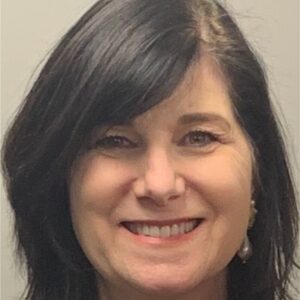Market senior living facilities even when beds are full
I have worked with many senior living providers throughout my career. Most come to me with the same need: “Help! We have empty beds!” As an owner, operator and manager of multiple facilities myself, I understand their concern.
The bigger concern is learning how providers can fill those beds in this ever-changing, expanding and extremely competitive environment. A major reason facilities aren’t turning a profit is they don’t have a marketing plan. Or worse, they aren’t marketing themselves at all.
When I first sit down with a client, I ask:
- What are you doing each month to market your facility?
- What are you doing each month to follow up on any leads from the last six months?
- What one thing works best for you?
- What is your plan to fill your beds?
- Why are you having a hard time filling your beds?
Some of the answers I hear are, “We try different things every month, but nothing seems to work.” “We send out monthly invitations to an open house.” “We pay for referrals.” “We use placement agencies and have our sales staff market to Skilled Nursing Facilities (SNFs).”
It’s easy to make placement agencies your primary source of leads, but I can tell you from first-hand experience that once I focused on generating my own leads, I had more control and my cost per move in significantly decreased. Some facilities use a customer relationship management (CRM) system. Others track their leads on paper. Regardless of the tracking method, lead generation and follow up both matter.
When business is good, we think business is going to be good forever. At that given moment, you’re Superman or Superwoman. You’ve fixed all marketing problems, and everyone will want to move into your facility for the rest of time! But administrators and executives should stop focusing on sales and marketing just because the beds are full.
When beds are empty, management hits panic mode. The sales staff feels the pressure, and they explore every possible lead from every single placement agency in town—the most expensive move ins. You and your company lose control.
A proactive plan allows the facility to retain control, whether it has 100 percent or 25 percent occupancy.
I recently worked for assisted living facility owned by two doctors, and it was pretty much a hands-off investment for them. In 11 years of operation, only two years saw a profit. Yes, you read that right. The owners were continuing to support the business financially, and they were fed up.
After my first day, I knew this wasn’t going to be a simple marketing arrangement. This facility needed a complete overhaul. I spent the next two weeks learning why they couldn’t fill their beds. They were licensed for 77 residents but only had 43 occupants, sometimes as few as 25.
I spoke with families of residents. I contacted potential customers who toured, and liked, the facility but placed their loved ones elsewhere. The facility’s inability to fill beds was more than a lack of marketing efforts. It became clear the main issue was with the staffing structure.
I was initially hired as a marketing consultant, so I developed a 16-point marketing plan. We tried something new each month to see if there were other ways of generating leads. Everything single detail was tracked.
The facility also took a harder look at its staffing strategy and made reductions where necessary to streamline productivity and tighten up management. After 60 days, overall revenue increased by 51 percent, and the facility was at 100 percent capacity with a waiting list. Of those, 92 percent were in-house leads and 8 percent were from placement agencies.
The facility is now making money and recovering from years of poor management. Even at full capacity, the facility invests a fixed amount in marketing each month as well as new marketing efforts to further lower the cost per move in.
Is it time to revamp your marketing strategy? Think about your marketing plan, how you are going to test and implement different strategies, how much you are going to commit financially to marketing every month. On top of that, ask yourself if there reasons other than marketing that your facility can’t fill up. Solving census issues isn’t only about marketing. It could be as simple as one poor manager or sales person. And that’s a relatively easy change to make.
 Nathan Mazur is the owner of six assisted living homes in southeastern Michigan. He is also the president and CEO of Blue Sky Healthcare Management, a consultancy focused on training care-oriented companies. He can be reached at njm@nathanjmazur.com.
Nathan Mazur is the owner of six assisted living homes in southeastern Michigan. He is also the president and CEO of Blue Sky Healthcare Management, a consultancy focused on training care-oriented companies. He can be reached at njm@nathanjmazur.com.
I Advance Senior Care is the industry-leading source for practical, in-depth, business-building, and resident care information for owners, executives, administrators, and directors of nursing at assisted living communities, skilled nursing facilities, post-acute facilities, and continuing care retirement communities. The I Advance Senior Care editorial team and industry experts provide market analysis, strategic direction, policy commentary, clinical best-practices, business management, and technology breakthroughs.
I Advance Senior Care is part of the Institute for the Advancement of Senior Care and published by Plain-English Health Care.
Related Articles
Topics: Articles , Executive Leadership , Facility management











